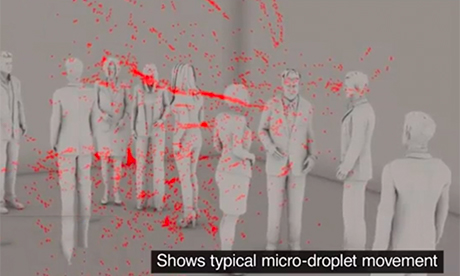Many of us have heard about the dangers of choral singing, especially because of the Skagit Valley Chorale in Mount Vernon, Washington. The choir held a careful rehearsal in March, its members each standing six feet apart.
Later, 45 of 60 attendees contracted the virus and two died.
While there could be a host of reasons for the quick spread of the virus that day, the group’s experience led many to wonder if something about corporate singing speeds the dissemination of COVID-19.
Expanded guidance proposed by the CDC discouraged use of choral groups in worship, and choral experts warned about the danger of choral singing until we have a vaccine.
But what about congregational singing?
Before we get started, please note that I am a worship pastor in a local church.
While I do not have medical training, this article has been written in consultation with medical professionals.
Where possible, I’ve linked to articles from respected medical organizations to support the article’s conclusions.
However, there is much we still don’t know, so I’m making an educated guess.
Aerosolized Particles
While primary transmission of COVID-19 seems to occur through respiratory droplets and physical contact, there is also concern about aerosol transmission.
A video by Japanese researchers visually demonstrates how aerosol particles can hang in the air; a White House presentation on April 24 indicated that the half-life of aerosol particles in 70 to 75-degree weather with no sun is 60 minutes.
It also appears that larger particles may get stuck in your upper respiratory tract, whereas smaller aerosol particles may make their way down to your lower lung.
Scientists debate how concerned we should be about airborne particles.
It seems that the virus can spread in this manner; but we don’t know how infectious these tiny particles are.
If someone sneezes in your face, you will receive a multitude of particles, which you’d want to avoid.
But how infectious is a small number of particles? We’re not sure.
Even if aerosol particles pose a small risk in everyday situations, that risk might be raised when the dosage is increased.
This might happen at a concert, when the audience is singing along, or at a sporting event, when the fans are yelling together. Or it might happen at church.
Here are some things to think through.
- Singing produces an aerosol cloud larger than speech does, and possibly larger even than coughing.
- The louder you sing, the more you spread.
- People absorb more particles when singing because they breathe more deeply.
- Air-handling systems (e.g. heat pumps) can cause particles to be redistributed throughout the room.
- Anecdotal evidence suggests that singing may have been a factor in recent outbreaks.
Continue reading for more detail and suggested practical solutions.
Additional readingNews category: Analysis and Comment.




